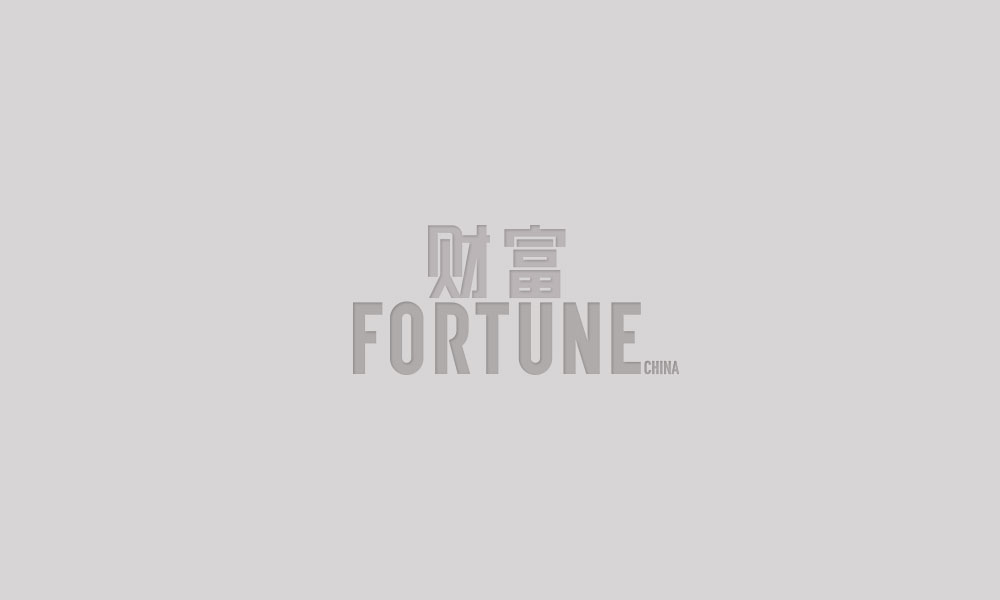數(shù)字技術(shù)掀起教科書革命
|
????可汗學(xué)院(Khan Academy)采用了部分開源的模式,。它的后端平臺(tái)是私有專利,但大部分內(nèi)容對(duì)外開放,,目前已經(jīng)吸引了數(shù)百萬(wàn)的學(xué)生,。哈佛大學(xué)(Harvard)和麻省理工大學(xué)(MIT)支持的大規(guī)模開放網(wǎng)絡(luò)課程EdX最近宣布,將開放部分后端課程平臺(tái),,給全世界的機(jī)構(gòu)提供機(jī)會(huì),,建立他們自己的在線課程。 ????與此同時(shí),,即便非盈利的CK-12和EdX,,免費(fèi)和開源的教育公司也需要?jiǎng)?chuàng)收。許多其他開源供應(yīng)商也存在這個(gè)問(wèn)題,。其中一個(gè)方案就是植入廣告,,同時(shí)提供支持服務(wù),幫助學(xué)校和教師有效利用所提供的教學(xué)材料,。而盈利性的免費(fèi)大規(guī)模開放網(wǎng)絡(luò)課程,,比如Coursera,正在嘗試幾種不同的潛在創(chuàng)收方式,,比如給其他學(xué)校發(fā)放使用課程內(nèi)容的許可,,或是在公司招聘人員和優(yōu)秀學(xué)生之間牽線搭橋。 ????哪種模式能夠獲得最終勝利尚不明了,??珊箤W(xué)院的薩爾曼?汗談到開源時(shí)說(shuō):“從道理上來(lái)說(shuō),這聽起來(lái)很棒,。不過(guò)真正的價(jià)值增值并不在于此,,而在于人們分享了資源,你才能獲得免費(fèi)體驗(yàn),?!睂?duì)可汗學(xué)院而言,有一件事很確定:傳統(tǒng)出版商無(wú)法勝任這項(xiàng)任務(wù),,從而踏上潮流的浪頭,?!叭绻患页霭嫔滔牒虵acebook競(jìng)爭(zhēng),他們會(huì)向你收取20美元的注冊(cè)費(fèi),。” ????同樣,,基礎(chǔ)教育學(xué)校和大學(xué)也同時(shí)踏入了這兩股潮流,。猶他州教育部2012年1月啟動(dòng)項(xiàng)目,發(fā)展和支持高中的科學(xué),、數(shù)學(xué),、語(yǔ)言藝術(shù)課使用開放式課本,首先投入使用的是CK-12的數(shù)學(xué)和科學(xué)課本,。通常一本書要花費(fèi)80美元,,而在兩年的試點(diǎn)項(xiàng)目期間,猶他州使用這類課本的花費(fèi)僅為每本約5美元,,這是使用亞馬遜(Amazon)的自助打印服務(wù)CreateSpace的成本,。 ????楊柏翰大學(xué)(Brigham Young University)的教授兼猶他州開放式課本試點(diǎn)項(xiàng)目負(fù)責(zé)人大衛(wèi)?威利說(shuō):“你給學(xué)生一本4美元或者5美元的書,讓他們用心學(xué)習(xí),。到了學(xué)年結(jié)束,,你可以和老師來(lái)看學(xué)生的學(xué)習(xí)難點(diǎn)在哪,從而修訂并完善課本,。教材每年都能變得更好,。” ????2012年9月,,加州立法支持大規(guī)模大學(xué)系統(tǒng)的入門課程使用50本開放式電子課本,。今年2月,國(guó)會(huì)議員喬治?米勒(加州民主黨)在眾議院提出議案,,要求撥款7.5億美元在全美支持?jǐn)?shù)字教育事業(yè),,包括在課堂上采用開放式教學(xué)資源。 ????大型出版商同樣密切關(guān)注著這些動(dòng)態(tài),,許多出版商并不為此興奮,。實(shí)際上,培生,、圣智教育(Cengage Learning)和 麥克米倫高等教育(Macmillan Higher Education)于2012年3月在曼哈頓聯(lián)邦法庭起訴了開源教育的出版商Boundless Learning,。大型出版商聲稱Boundless“選編、組合和重排”了他們的材料,,侵犯了他們的知識(shí)產(chǎn)權(quán),。Boundless的CEO阿里爾?迪亞茲在最近的一次訴訟陳述中寫道:“這類法律訴訟是他們的一次嘗試。他們想借此扼殺借助網(wǎng)絡(luò)力量幫助學(xué)生節(jié)省金錢,、提高學(xué)習(xí)效果的初創(chuàng)公司,?!?/p> ????在法律訴訟之外,開源教育也必須面對(duì)一個(gè)簡(jiǎn)單的事實(shí):教育機(jī)構(gòu)本質(zhì)上是保守派,,這種轉(zhuǎn)變的進(jìn)展將非常緩慢,。而主流出版商已經(jīng)耗時(shí)幾十年建立了遍布全國(guó)的銷售團(tuán)隊(duì),他們與教學(xué)系統(tǒng)和教育工作者關(guān)系緊密,,在應(yīng)對(duì)復(fù)雜繁瑣的國(guó)家課本審批流程上也很專業(yè),。 ????理想情況下,主流出版商,、免費(fèi)教育提供商和開源公司將互相推動(dòng),,漸漸加大投入,最終讓學(xué)生和老師受益,。話說(shuō)回來(lái),,這種局面為什么不能像開源的Linux系統(tǒng)推動(dòng)微軟(Microsoft)和蘋果(Apple)進(jìn)步那樣呢?威利說(shuō):“我想,,出版商和開源世界最終總會(huì)建立起一種健康的關(guān)系,。他們可以互相推動(dòng),互相挑戰(zhàn),。競(jìng)爭(zhēng)總歸是件好事,。”(財(cái)富中文網(wǎng)) ????譯者:嚴(yán)匡正 |
????Khan Academy, which is partly open-source (its back-end platform is proprietary, but most of its content is open), has attracted millions of students. The Harvard and MIT-backed MOOC EdX recently announced that it would begin to open up parts of its back-end course platform to give organizations all over the world an opportunity to make online classes of their own. ????At the same time, free and open-source education firms, even nonprofits like CK-12 and EdX, need to generate revenue. As is the case with many other open-source outfits, one option is to offer add-on and other support services that help schools and teachers make the best use of the education materials these firms are making available. For-profit, free MOOCs like Coursera are experimenting with several different potential revenue streams, from licensing course content to other schools, to pairing corporate recruiters with top students. ????Which model will prevail is still unclear. "Philosophically it sounds great," says Khan Academy'sSalman Khan, referring to open source, "but that doesn't seem where the real value-add has been. The real value-add has been people putting out the resources so you can experience them for free." One thing is certain to Khan, though: The traditional players are not up to the task to hop on to this trend. "If a publisher wanted to compete with Facebook (FB), they would charge you $20 to sign up." ????Just the same, K-12 schools and universities are dabbling in both trends. Utah's department of education launched a project in January 2012 to develop and support the use of open textbooks in high school science, math, and language arts, using CK-12's math and science texts as a starting point. Instead of costing the usual $80 per book, Utah was able to procure texts for around $5, the cost of printing from Amazon's self-publishing service CreateSpace, during a two-year pilot program. ????"You give this kid a $4 or $5 book, let them use it to their heart's content," says David Wiley, a professor at Brigham Young University and leader of the open textbook pilot program in Utah. "And then you go back at the end of year with teachers, see what students struggle on, and revise and improve the book. Each year, the text gets better." ????In September 2012, California passed legislation to support the development of 50 open-digital textbooks for intro-level classes taught in its massive university system. And in February, Congressman George Miller (D-Calif.) introduced legislation in the House to commit $750 million to bolster digital education efforts across the U.S., including the adoption of open-educational resources in classrooms. ????Major publishers are also taking notice; many are not thrilled. In fact, publishers Pearson, Cengage Learning, and Macmillan Higher Education filed a lawsuit in federal court in Manhattan against open-source education publisher Boundless Learning in March 2012. The major publishers claim that Boundless violates their intellectual property by matching the "selection, coordination, and arrangement" of their materials. Boundless responded to the lawsuit in February, requesting a jury trial. "Such legal action is an attempt to stifle startups using the power of the Internet to help students save money and become better learners," wrote Boundless CEO Ariel Diaz in a recent statement on the lawsuit. ????On top of legal action, open source education will have to deal with the simple fact that educational institutions are, by nature, conservative and slow to change. And the major publishers have spent decades building sales-staff armies all across the country with close relationships to school systems and educators. The traditional publishers are also experts in tackling the Byzantine state textbook approval process. ????Ideally, the major publishers, the free education players, and the open source firms will end up egging each other on, upping the ante at each step of the way, and ultimately benefiting students and teachers. After all, why can't it play out like the way open-source Linux helped propel advances from Microsoft (MSFT) and Apple (AAPL)? "I think there will always be what I think is a healthy relationship between publishers and the open-source world. They push each other forward. They challenge each other. Competition is good," says Wiley. |













